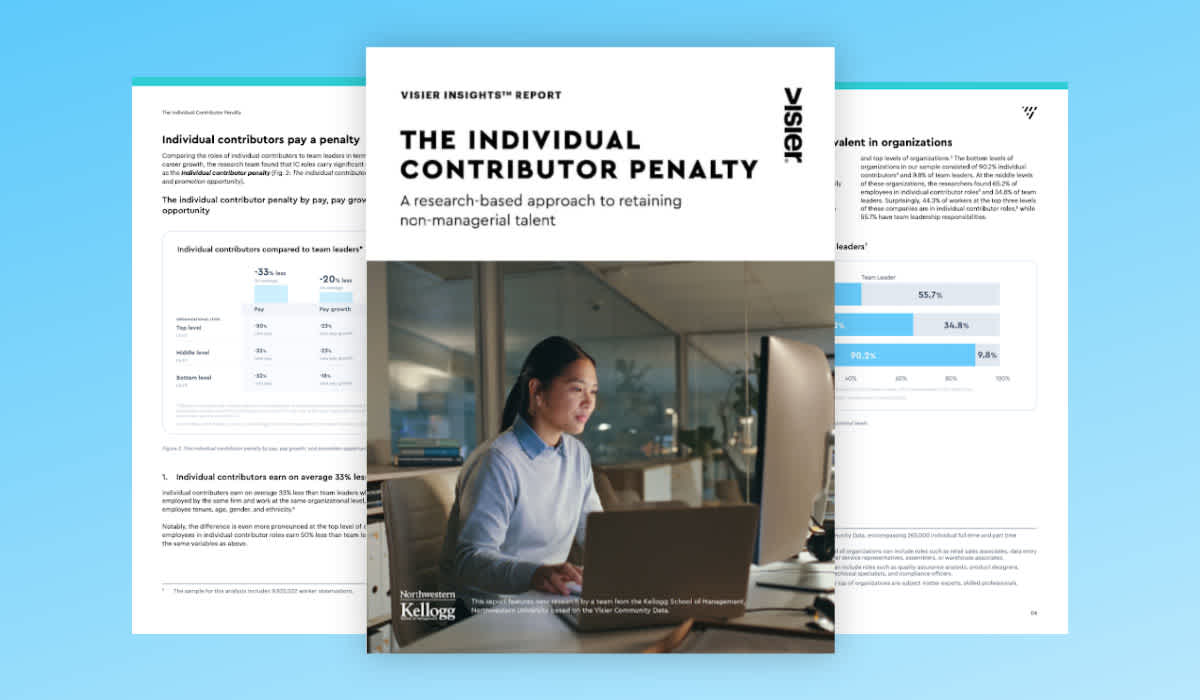Mastering Span of Control: A Comprehensive HR Walkthrough
The span of control is a critical metric every company should track. It impacts manager effectiveness and team performance and can even increase efficiency. Here's everything you need to know.

With ever-changing organizational dynamics, employees stand tall as invaluable assets. Their teamwork, in particular, serves as the lifeblood of success. Within this picture, play an important role in ensuring teams work their best. But amidst it all, the ideal span of control still seems to confuse teams.
Too wide a span, and managers risk drowning in a sea of responsibilities. Too narrow, and the burden may fall heavily upon the team's shoulders.
Throughout this article, we’ll take a closer look at the span of control, why it’s so important, and how to find the ideal number for your organization.

What is the span of control?
The span of control is the number of direct reports and subordinates a manager has. It’s a critical metric for an organization as it impacts not only manager effectiveness but also team performance.
When tracking HR metrics, you’ll often hear about the importance of spans and layers.
“Spans” refers to the span of control, while “layers” measure the number of supervisory levels.
To calculate the span of control, you need to divide the total number of employees by the number of managers.
A manager with too many direct reports will deal with an increased workload, risking burnout. The result? They won’t be able to support their employees and there might be communication challenges. On the other end, a small span of control can lead to inefficiency and fewer career advancement options for employees.
Why is the span of control important?
Tracking and understanding the span of control in your company comes with a series of advantages:
Increased efficiency. Optimizing your organization’s span of control will help teams become more effective. Communication thus becomes easier, increasing engagement and productivity.
Improved manager effectiveness. If a manager has too many people working on their team, their workload can increase significantly, leading to poor performance and even burnout. An optimal span of control will increase effectiveness and improve satisfaction and performance.
Improved decision-making. Optimizing the spans and layers gives people the ability to take action. As the decision-making process becomes more effective, it not only boosts effectiveness but also fosters a sense of value among employees, fueling higher levels of engagement across the board.
Reduced costs. With the optimal spans and layers, your employees work together more effectively while also reducing costs. That’s because you’ll have more efficient communication, fewer layers, and better productivity across all teams.
Improved compensation strategy. Knowing your spans and layers enables you to find new opportunities related to promotions and salary grades, creating a more strategic compensation strategy.

What is the ideal span of control ratio?
Visier research found that most people work in teams of 6-10 people. The ideal manager-to-direct reports ratio seems to be 1:5, but these numbers can vary depending on the nature of work and industry.
For instance, in the healthcare sector, an average team of 22 people is more common. Larger teams, of more than 11 people, are also common in sales, facilities, or support.
But in sectors like IT and finances, smaller teams seem to be better and lead to improved performance and reduced turnover.
What are examples of spans of control?
While research shows the team size can vary depending on the sector, the ideal number seems to be around 6 people.
But how does it all look in practice? Let’s look at a few examples.
In a call center, each manager will have the same number of direct reports. Customer service representatives need to handle calls, help fix issues, or refer the customer to the right department.
While the work doesn’t always require highly specialized skills, it can be difficult, so having an optimal span of control is essential. Without a good balance between employee workloads, there’s a risk of exhaustion and, ultimately, burnout.
That’s where the manager comes in. They need to supervise each person’s workload, making sure no one’s working significantly more than others. They can also provide guidance and mentorship, and when needed, step in to resolve customer issues.
Another example could be that of a manager leading a small team of researchers working on cutting-edge technology.
Picture this: The team members have a lot of experience in the field. However, because of the sensitive nature of the work, the manager will need to be involved in the project planning and decision-making process.
In this case, team members have well-defined roles while the manager oversees their work, ensuring a smooth collaboration and facilitating knowledge-sharing.
Common factors affecting the span of control
The span of control is not a universal number. So no one ratio will be optimal for all companies. Factors that affect it include:
The nature of the work. Visier research showed some sectors, like healthcare or sales, do better with a larger team size and a bigger span of control. Likewise, highly specialized tasks may require more supervision, so a smaller team will be better.
Organizational size. A large company will often require more layers of management, which will impact the span of control.
Organizational structure. A flat structure will have a wider span of control as opposed to a hierarchical one.
Employee competence. Employees with more experience and highly specialized skills will often require less supervision. They also allow for a wider span of control, as they can have more autonomy in their work and the decision-making process.
Geographical dispersion. Managing remote teams, spread across several geographical locations, can be more challenging, and requires a narrower span of control.
Manager experience and competency. A more experienced manager can handle a larger team, as they’ll be able to balance their workload more easily and delegate when possible. However, this shouldn’t be the only factor you use to determine your ideal span of control. Even an experienced manager can end up with burnout. So look at other factors as well, like the nature of the work or employee competence.

How to design the spans of control for your organization
Figuring out the right spans of control is like piecing together a puzzle—there are lots of moving parts to consider.
Start by looking at your managers, their competence, and their performance. Effective managers may be able to lead bigger teams, so a wider span of control could work. You can also dig deeper and try to understand the type of managers working in your organization.
Some people prefer to be more involved with their teams, which makes them great at leading smaller teams of 3-5 people. Others prefer to take the role of a supervisor, giving enough autonomy to their reports. This implies they can lead bigger teams of around 10 people or more.
You’ll also need to look at the organizational structure and the complexity of the work. If your company has a flat structure, a wider span of control will make more sense.
Hierarchical companies that come with several managerial levels will usually have a narrower span. However, the complexity of the work may sometimes require a bigger or smaller team, so make adjustments as needed.
Using people analytics to manage the span of control
Think of the span of control as the secret sauce that keeps things running smoothly. But don't be fooled by its simplicity at first glance. There's a whole lot more to it than meets the eye. You've got to take into account aspects like the type of work being done, how effective the manager is, how experienced the team members are, and other factors.
A simple way of better understanding your workforce is by using people analytics. With it, you can see a unified picture of your workforce and find answers to critical questions.
You’ll get a better understanding of essential HR metrics, including manager effectiveness, spans and layers, performance, and productivity. People analytics will help you find the right team size for each department and each project so that both the managers and team members can thrive and reach their goals.
Visier People® is a people analytics platform that allows analytics teams to handle all their people data. It's like a master connector, linking up with all data sources within your organization, from HR systems to payroll and performance reviews.
Visier's ace in the hole is its knack for pulling together data super efficiently, even when it's coming from all different directions—think varying levels of detail, how often it's updated, and different formats. Say goodbye to those tedious days of manual data collection and cleaning!

Span of control, team size, and manager effectiveness
When it comes to teams, size matters. Learn the latest research about team size, how team size impacts resignation rates, and how to design the ideal team size for your organization.
Experts from Comerica and Visier share how a data-driven approach to optimizing spans and layers delivers more accurate analyses.
Research shows how data makes people managers more effective and more human while supporting them to deliver productivity and profitability.
Learn how Standard Bank Group uses people analytics to instill a more data-driven approach to decision-making across its line managers. Watch this Fireside chat with Standard Bank Group and the Josh Bersin Company on demand.
Get the Outsmart newsletter
You can unsubscribe at any time. For more information, check out Visier's Privacy Statement.


